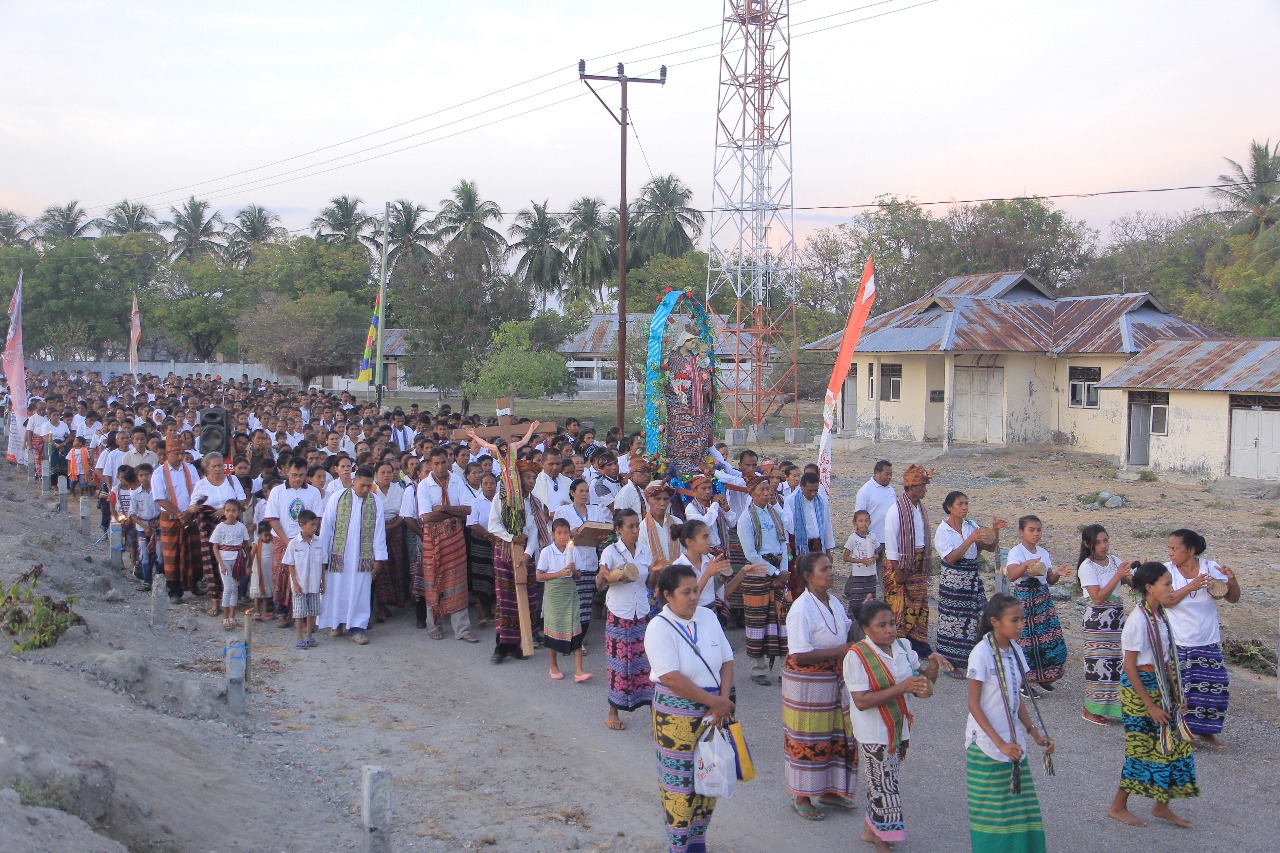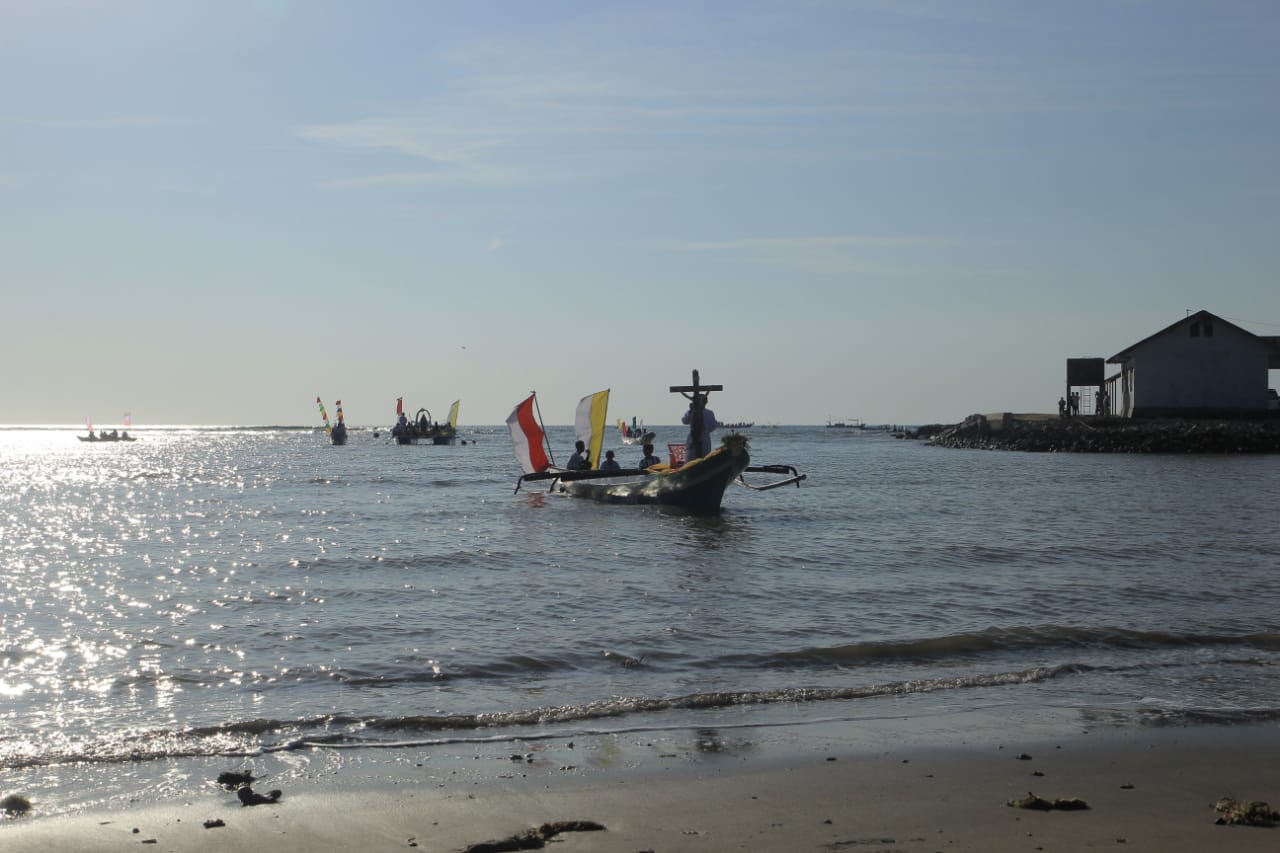Atambua Vox NTT-Since six years ago (2002), Stella Maris Atapupu Parish, Belu district carried out routinely a spiritual procession with Naifeto Lale’an.
Naifeto Lale’an comes from three words namely Nai, Feto and Lale’an. Nai means noble, Feto means mother and Lale’an means heaven.
Naifeto Lali’an can be interpreted as the Heavenly Mother.
This procession is the statue of Our Lady Stella Maris statue around the oldest parish area on the Timor island.
In addition to strengthening Christian faith and brotherhood, the Naifeto Lale’an Procession was held to commemorate the history of Catholicism in the Atapupu region.
At that time Jesuit missionaries came to Atapupu’s land from the sea carrying crosses, Scriptures, Mother of the Virgin Mary and other spiritual facilities.
This year, the Naifeto Lale’an procession takes place from July 25 to July 31, 2018 where there are two routes, namely land and sea.
During this procession, Naifeto Lale’an or Our Lady Stella Maris was paraded to visit the people in each chapel in each of the parish’s stations.
After visiting all the chapels and stations, proceeding by sea was carried out from the Gulf of Gurita to Atapupu.
This solemn and lively procession began at around 1:00 p.m.
The boat carrying the statue of Maria Stella Maris was at the front. Accompanied by dozens of boats, Catholics who followed the procession continued to pray until they pulled over at the fish landing site, close to the Atapupu Parish center.
The statue was then re-enacted in the Stella Maris Atapupu Church.
Witnessed by VoxNtt.com, thousands of Catholics from Stela Maris Parish and the surrounding area came following a marine procession that held on Tuesday (31/07/2018) afternoon.

The people follow faithfully this stage of the procession to its peak which held on Wednesday (31/08/2018).
At the peak celebration, this procession ends with a 135th birthday celebration of the Atapupu Stella Maris Atapupu Parish in Atapupu Church.
Jesuit Pioneers
The official website of the Atambua archdiocese released, the history of the Atapupu parish began with the mission of a Jesuit priest named Jacobus Kraaijvanger, SJ.
Father Jacob was the first pastor who investigate the feasibility of establishing a station in Atapupu.
After finalizing the preparations, he wrote a letter to the Governor-General of the Dutch East Indies in Batavia asking for the establishment of the Atapupu Station.
Upon the request, the Governor of the Dutch East Indies issued a permit to establish the Atapupu Station on August 1st , 1883.
The Atapupu station was the first station on the island of Timor and became part of the Apostolic Vicariate of Batavia. Until the submission of the mission from SJ to SVD in 1913, there were 2,500 people there.
During the Jesuit leadership, there were 7 pastors on duty there.
Father Kraaijvanger who was the first pastor was assisted by two priests named Lammker, SJ (1885) and Kuijper, SJ (1886-1888).
After Father Kraaijvanger died, he was replaced by Father Hendrick Janssen, SJ (1889-1896).
Then came and served in succession at Atapupu, Father Van Swietten, SJ (1896-1898), Father Van de Velden, SJ (1898-1899), and Father Adrianus Matthijsen, SJ (1899-1913).
From the statistical data 2014, it is known that Atapupu Parish has a total of 14,638 Catholics scattered in 2,957 households.
The oldest parish in Timor Island has 3 stations, the Lakafehan Stasi; Stasi Seroja and Silasi Stasi. The large number of people is spread in 36 neighborhoods and 119 KUB.
Author: Marcel Manek
Editor: Rini Kartini/Hos







